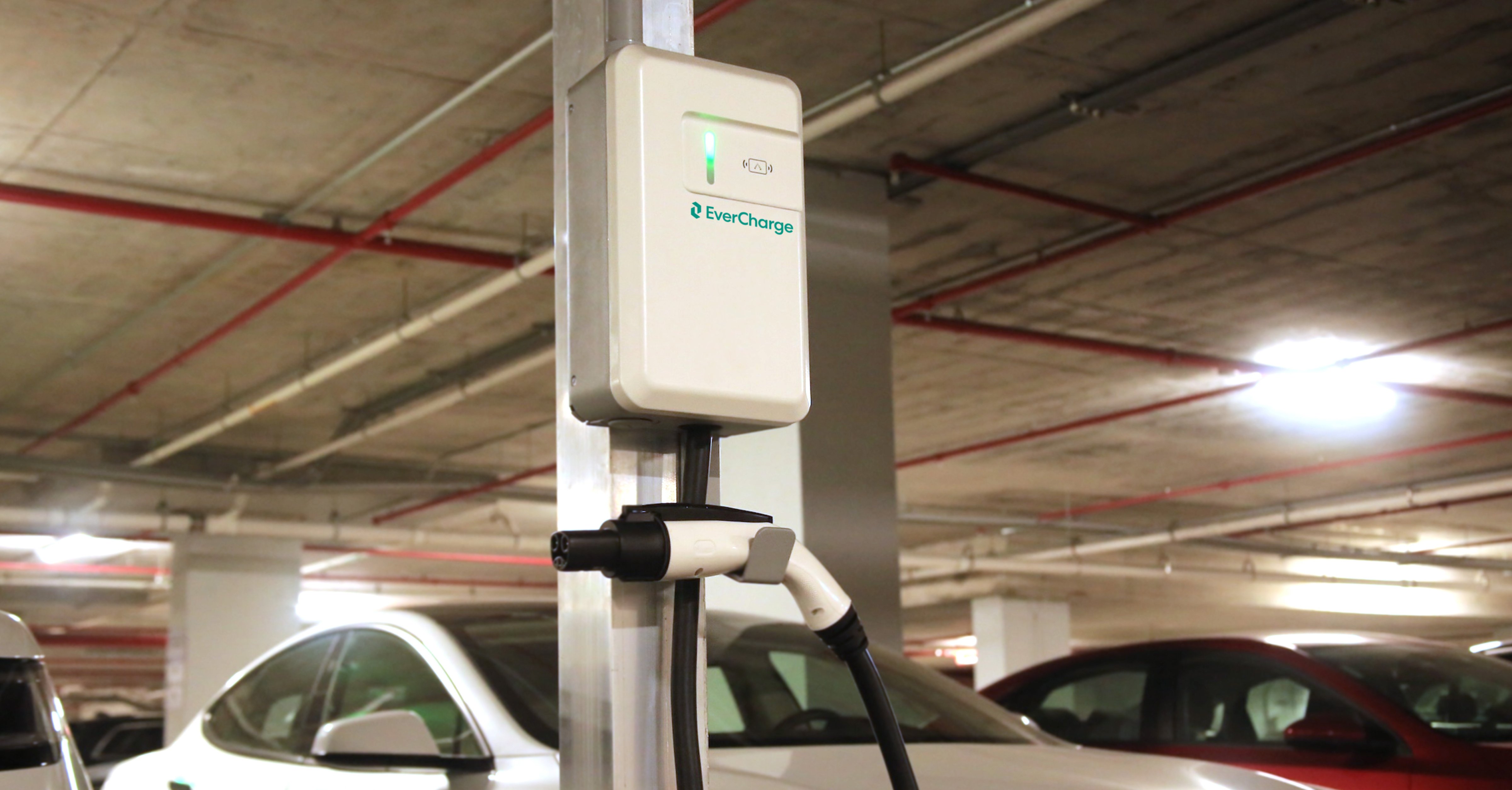Despite increases in the adoption of electric vehicles, the availability of home chargers — especially in multi-unit communities — remains low. In 2023, U.S.-based property managers and landlords estimated that less than 5% of apartments and other dwellings had access to home charging. As 80% of charging occurs at home, this presents significant barriers to adoption for the majority of Americans.
But as the push for electrification increases, so does the availability of grant funding. Many public utilities, state and local governments, and private entities have money available to future-proof these buildings. The idea that rebates are exclusive, hard to find, or come with strings attached is both outdated and false.
If you’re interested in exploring programs like this for your property, we debunk some of the most popular myths below, and share resources to help get you started.
Myth #1: There is No Funding Available for Multi-Unit Dwellings
Condominiums, townhomes, apartments, and other multi-unit dwellings are prime candidates for grant funding. Various government agencies, including local utilities and municipalities, target these properties when choosing how and when to fund EV charging projects.
For the most up-to-date information, we recommend visiting your region’s utility webpage for detailed incentive instructions. In the United States, the Department of Energy runs the Alternative Fuels Data Center — a free online resource where visitors can receive helpful tips and anecdotes when applying for grant funding. This searchable database lists transportation projects, application deadlines, costs, and emissions data by state.
Myth #2: Electrical Assessments and Engineering Work is Too Expensive
There’s a common myth amongst property owners that pre-assessments, like load studies and other electrical or engineering work, is wildly expensive. Historically, this process included scheduling challenges and multiple time-consuming visits. Because of this, HOAs and landlords still assume that the cost required will be too high.
When you work with EverCharge, we include these services as part of the greater installation process. Our automated load study further simplifies and accelerates EV charging infrastructure planning, by reducing the expenses and complexity involved throughout the analysis and planning stages.
Otherwise, many utilities offer technical assistance programs that provide free or low-cost assessments to multi-unit dwellings in their area. Many buildings that qualify for these cost-saving programs are:
- High-volume communities
- Older units
- Home to underserved populations, and
- Without publicly-accessible EV charging stations nearby
Note: this is not an exhaustive list, as requirements will vary by application.
Myth #3: NEVI is the Only Rebate for DCFC/Level 3 Chargers
Contrary to popular belief, the National Electric Vehicle Infrastructure Formula Program (NEVI), is not the only rebate available for DCFC/Level 3 chargers. While NEVI is one of the most widely-known and used programs, the federal government offers multiple incentives for community-based, public DCFC charging. The Charging and Fueling Infrastructure Discretionary Grant Program (CFI) is a funding opportunity sponsored by President Biden’s Bipartisan Infrastructure Law to increase public charging spaces in both rural and urban areas.
Likewise, often local utilities will provide rebates for DCFCs. The state of California specifically presents incentives for both chargers, depending on the size of the project. One example is EnergIIZE, which supports public or private heavy-and medium-duty electric vehicles.
Although property managers and HOA boards may sometimes present obstacles to adoption, your local public utility can help you advocate for electrification. Rebates reduce up-front costs, a frequent barrier to entry. Regardless of property type or income level, electrification is possible for all.
Curious how to get started with EV charging? Let’s talk.
